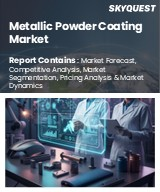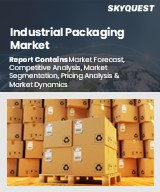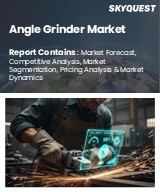
|
시장보고서
상품코드
1822430
세계의 금속 합금 시장 : 예측 - 재료 유형별, 합금 형태별, 제조 공정별, 용도별, 지역별 분석(-2032년)Metal Alloys Market Forecasts to 2032 - Global Analysis By Material Type (Ferrous Alloys, Non-Ferrous Alloys and Precious Metal Alloys), Alloy Form, Manufacturing Process, Application and By Geography |
||||||
Stratistics MRC에 따르면 세계의 금속 합금 시장은 2025년 3,660억 4,000만 달러로 추정되고, 예측 기간 동안 CAGR 6.5%로 성장할 전망이며, 2032년에는 5,688억 2,000만 달러에 이를 것으로 예측됩니다.
금속 합금은 2유형 이상의 원소로 구성되는 재료이며, 그 중 적어도 1유형은 금속입니다. 순금속과는 달리, 합금은 강도, 내구성, 내식성, 열전도성 또는 전기전도성 향상을 나타내며 다양한 산업 분야에 적합합니다. 일반적인 예로는 강철(철과 탄소), 청동(구리와 주석), 황동(구리와 아연) 등이 있습니다. 합금화 공정을 통해 경도, 유연성, 융점 등의 특성을 정밀하게 제어할 수 있어 세계 자동차, 항공우주, 건설, 전자기기, 기계 산업을 위한 맞춤형 솔루션을 제공할 수 있습니다.
고성능 합금의 진보
기계적 및 열적 특성의 향상은 고응력 및 고온 조건 하에서의 사용을 지원합니다. 생산자는 첨단 가공 기술과 디지털 가공을 결합합니다. 가볍고 내식성이 우수한 재료는 이동성과 인프라에서 선호됩니다. 지속적인 연구는 복잡한 합금 시스템의 기술 혁신을 추진하고 있습니다. 고성능 금속은 현대 제조 전략에 필수적인 요소가 되고 있습니다.
변동하는 원료 가격
시장 이동과 공급의 혼란은 조달을 예측하기 어렵게 만듭니다. 중소기업은 비용 변동을 흡수하거나 유리한 계약을 확보하는 데 어려움을 겪고 있습니다. 전략적 조달 및 금융 헤지가 점점 더 필요해지고 있습니다. 가격 설정의 유연성이 제한된 지역에서는 경쟁 압력이 높아지고 있습니다. 불안정한 투입 비용이 합금 제조업의 성장을 둔화시키고 있습니다.
신흥 경제권 수요 증가
인프라 업그레이드와 제조업 확대로 합금 사용량이 증가하고 있습니다. 공공 투자와 정책 지원은 현지 생산을 장려합니다. 수출 지향 전략은 지역 공급자들 사이에서 지지를 모으고 있습니다. 소비자와 산업의 현대화가 새로운 용도에 박차를 가하고 있습니다. 신흥국이 합금 시장 성장의 주요 촉진요인이 되고 있습니다.
기술 경쟁 및 시장 경쟁
비금속 대체 재료는 구조 및 열 용도에서 상승하고 있습니다. 급속한 기술 혁신으로 제조업체는 연구 개발에 적극적인 투자를 강요하고 있습니다. 독자적인 공정과 재료에 의한 차별화가 필수적이 되고 있습니다. 시장 포화는 가격 압축과 금리 축소를 촉진합니다. 경쟁 위협은 밸류체인 전반의 전략적 의사 결정에 영향을 미칩니다.
COVID-19의 영향 :
팬데믹은 공급망 지연, 노동력 부족, 산업 활동 저하를 통해 합금 생산을 혼란시켰습니다. 자동차, 항공우주, 건축 수요는 감소했지만 의료 및 포장 부문은 회복력을 유지했습니다. 제조업체는 필수적인 용도를 선호하고 재고 균형을 조정하여 대응했습니다. 디지털 툴과 원격 협업은 설계와 조달의 연속성을 지원했습니다. 복구 작업은 공급망의 회복력과 업무 유연성에 중점을 두었습니다. COVID-19는 우선순위를 변경하여 헬스케어 등급과 지속 가능한 합금 솔루션의 혁신을 가속화했습니다.
철계 합금 부문이 예측 기간 동안 최대가 될 전망
철계 합금 부문은 건설, 자동차, 기계 및 인프라에서 광범위한 사용을 기반으로 예측 기간 동안 최대 시장 점유율을 차지할 것으로 예측됩니다. 철강 및 철계 합금은 비용 효율적인 강도, 내구성 및 재활용성을 제공합니다. 생산자는 내식성, 경량화 및 가공 효율성을 위해 등급을 최적화합니다. 수요는 선진국 시장, 신흥국 시장 모두 계속 왕성합니다. 스마트 매뉴팩처링 및 모듈 설계와의 통합으로 생산 확장성이 향상되었습니다.
예측 기간 동안 헬스케어 분야의 CAGR이 가장 높아질 전망
예측 기간 동안 헬스케어 분야는 생체 적합성, 내식성, 정밀 가공 합금 수요에 견인되어 가장 높은 성장률을 보일 것으로 예측됩니다. 임플란트, 수술 기구, 진단 장비, 의료기기에 대한 용도는 빠르게 확대되고 있습니다. 규제 기준과 임상 성능 요구 사항은 재료 혁신을 형성합니다. 제조업체 각 회사는 의료용으로 조정된 티타늄, 코발트 크롬 및 특수 스테인레스 스틸 등급을 개발하고 있습니다. 적층 성형 및 마이크로 머시닝과의 통합은 커스터마이징을 강화합니다.
최대 점유율을 차지하는 지역 :
예측 기간 동안 아시아태평양은 강력한 제조 거점, 인프라 투자 및 산업 성장으로 최대 시장 점유율을 차지할 것으로 예측됩니다. 중국, 인도, 일본, 한국과 같은 국가들은 국내 및 수출 시장을 위한 합금 생산을 확대하고 있습니다. 건설, 운송, 에너지에 대한 정부의 이니셔티브가 수요를 강화하고 있습니다. 지역 공급업체는 생산 능력을 확대하고 기술을 업그레이드하고 있습니다. 경쟁 가격 및 원재료 가용성은 시장의 주도권을 높이고 있습니다.
CAGR이 가장 높은 지역 :
예측 기간 동안 북미는 항공우주, 의료 및 에너지 분야에서 고성능 합금 수요에 견인되어 가장 높은 CAGR을 나타낼 것으로 예측됩니다. 미국과 캐나다는 첨단 제조, 재료 연구 개발 및 지속 가능한 기술에 투자하고 있습니다. 규제의 명확화 및 기술 혁신에 대한 자금 제공이 제품 개발을 가속화하고 있습니다. 생산자는 중요한 용도를 위한 경량, 내식성, 특수 합금에 주력하고 있습니다. 디지털 설계 및 적층 조형과의 통합이 경쟁력을 높이고 있습니다.
무료 주문을 받아서 만드는 서비스 :
이 보고서를 구독하는 고객은 다음 무료 맞춤설정 옵션 중 하나를 사용할 수 있습니다.
- 기업 프로파일
- 추가 시장 기업의 종합적 프로파일링(3개사까지)
- 주요 기업의 SWOT 분석(3개사까지)
- 지역 세분화
- 고객의 관심에 응한 주요국 시장 추계, 예측 및 CAGR(주 : 타당성 확인에 따름)
- 경쟁 벤치마킹
- 제품 포트폴리오, 지리적 존재, 전략적 제휴에 기반한 주요 기업 벤치마킹
목차
제1장 주요 요약
제2장 서문
- 개요
- 이해관계자
- 조사 범위
- 조사 방법
- 데이터 마이닝
- 데이터 분석
- 데이터 검증
- 조사 접근
- 조사 자료
- 1차 조사 자료
- 2차 조사 정보원
- 전제조건
제3장 시장 동향 분석
- 성장 촉진요인
- 성장 억제요인
- 기회
- 위협
- 용도 분석
- 신흥 시장
- COVID-19의 영향
제4장 Porter's Five Forces 분석
- 공급기업의 협상력
- 구매자의 협상력
- 대체품의 위협
- 신규 참가업체의 위협
- 경쟁 기업간 경쟁 관계
제5장 세계의 금속 합금 시장 : 재료 유형별
- 철 합금
- 스테인레스 스틸
- 탄소강
- 공구강
- 비철 합금
- 알루미늄
- 구리
- 니켈
- 티타늄
- 코발트
- 아연
- 귀금속 합금
- 금
- 은
- 백금족 금속
제6장 세계의 금속 합금 시장 : 합금 형태별
- 시트
- 바와 로드
- 튜브와 파이프
- 포일
- 분말
제7장 세계의 금속 합금 시장 : 제조 공정별
- 파운드리
- 열간 압연
- 냉간 압연
- 적층 조형
제8장 세계의 금속 합금 시장 : 용도별
- 교통 기관
- 건설
- 포장
- 기계 설비
- 전기 및 전자
- 헬스케어
- 기타 용도
제9장 세계의 금속 합금 시장 : 지역별
- 북미
- 미국
- 캐나다
- 멕시코
- 유럽
- 독일
- 영국
- 이탈리아
- 프랑스
- 스페인
- 기타 유럽
- 아시아태평양
- 일본
- 중국
- 인도
- 호주
- 뉴질랜드
- 한국
- 기타 아시아태평양
- 남미
- 아르헨티나
- 브라질
- 칠레
- 기타 남미
- 중동 및 아프리카
- 사우디아라비아
- 아랍에미리트(UAE)
- 카타르
- 남아프리카
- 기타 중동 및 아프리카
제10장 주요 발전
- 계약, 파트너십, 협업 및 합작투자
- 인수 및 합병
- 신제품 발매
- 사업 확대
- 기타 주요 전략
제11장 기업 프로파일링
- ArcelorMittal
- Nippon Steel Corporation
- POSCO Holdings Inc.
- Thyssenkrupp AG
- United States Steel Corporation
- Nucor Corporation
- Tata Steel Limited
- JSW Steel Ltd.
- Voestalpine AG
- Allegheny Technologies Incorporated(ATI)
- Carpenter Technology Corporation
- Outokumpu Oyj
- JFE Steel Corporation
- China Baowu Steel Group Corporation
- Sandvik AB
According to Stratistics MRC, the Global Metal Alloys Market is accounted for $366.04 billion in 2025 and is expected to reach $568.82 billion by 2032 growing at a CAGR of 6.5% during the forecast period. Metal alloys are materials composed of two or more elements, at least one of which is a metal, combined to enhance their physical and chemical properties. Unlike pure metals, alloys exhibit improved strength, durability, corrosion resistance, and thermal or electrical conductivity, making them suitable for diverse industrial applications. Common examples include steel (iron and carbon), bronze (copper and tin), and brass (copper and zinc). The alloying process allows precise control over characteristics such as hardness, flexibility, and melting point, enabling tailored solutions for automotive, aerospace, construction, electronics, and machinery industries worldwide.
Market Dynamics:
Driver:
Advancements in high-performance alloys
Improved mechanical and thermal properties are supporting use in high-stress and high-temperature conditions. Producers are combining advanced processing techniques with digital fabrication. Lightweight and corrosion-resistant materials are gaining preference in mobility and infrastructure. Ongoing research is driving innovation in complex alloy systems. High-performance metals are becoming essential to modern manufacturing strategies.
Restraint:
Fluctuating raw material prices
Market shifts and supply disruptions are making procurement less predictable. Smaller firms struggle to absorb cost swings or secure favorable contracts. Strategic sourcing and financial hedging are increasingly necessary. Competitive pressure is rising in regions with limited pricing flexibility. Volatile input costs are slowing growth in alloy manufacturing.
Opportunity:
Growing demand in emerging economies
Infrastructure upgrades and manufacturing expansion are increasing alloy usage. Public investment and policy support are encouraging local production. Export-oriented strategies are gaining traction among regional suppliers. Consumer and industrial modernization is fueling new applications. Emerging economies are becoming key drivers of alloy market growth.
Threat:
Technological and market competition
Non-metal alternatives are gaining ground in structural and thermal applications. Rapid innovation is forcing manufacturers to invest aggressively in R&D. Differentiation through proprietary processes and materials is becoming essential. Saturated markets are driving price compression and margin erosion. Competitive threats are influencing strategic decisions across the value chain.
Covid-19 Impact:
The pandemic disrupted alloy production through supply chain delays, workforce shortages, and reduced industrial activity. Demand declined in automotive, aerospace, and construction, while medical and packaging sectors remained resilient. Manufacturers adapted by prioritizing essential applications and rebalancing inventories. Digital tools and remote collaboration supported continuity in design and procurement. Recovery efforts focused on supply chain resilience and operational flexibility. Covid-19 reshaped priorities, accelerating innovation in healthcare-grade and sustainable alloy solutions.
The ferrous alloys segment is expected to be the largest during the forecast period
The ferrous alloys segment is expected to account for the largest market share during the forecast period based on its extensive use in construction, automotive, machinery, and infrastructure. Steel and iron-based alloys offer cost-effective strength, durability, and recyclability. Producers are optimizing grades for corrosion resistance, weight reduction, and fabrication efficiency. Demand remains strong across both developed and emerging markets. Integration with smart manufacturing and modular design is enhancing production scalability.
The healthcare segment is expected to have the highest CAGR during the forecast period
Over the forecast period, the healthcare segment is predicted to witness the highest growth rate driven by demand for biocompatible, corrosion-resistant, and precision-engineered alloys. Applications in implants, surgical tools, diagnostic equipment, and medical devices are expanding rapidly. Regulatory standards and clinical performance requirements are shaping material innovation. Producers are developing titanium, cobalt-chrome, and specialty stainless steel grades tailored for medical use. Integration with additive manufacturing and micro-machining is enhancing customization.
Region with largest share:
During the forecast period, the Asia Pacific region is expected to hold the largest market share by its strong manufacturing base, infrastructure investment, and industrial growth. Countries like China, India, Japan, and South Korea are scaling alloy production for domestic and export markets. Government initiatives in construction, transportation, and energy are reinforcing demand. Regional suppliers are expanding capacity and upgrading technology. Competitive pricing and raw material availability are enhancing market leadership.
Region with highest CAGR:
Over the forecast period, the North America region is anticipated to exhibit the highest CAGR driven by demand for high-performance alloys in aerospace, healthcare, and energy sectors. The U.S. and Canada are investing in advanced manufacturing, materials R&D, and sustainable technologies. Regulatory clarity and innovation funding are accelerating product development. Producers are focusing on lightweight, corrosion-resistant, and specialty alloys for critical applications. Integration with digital design and additive manufacturing is enhancing competitiveness.
Key players in the market
Some of the key players in Metal Alloys Market include ArcelorMittal, Nippon Steel Corporation, POSCO Holdings Inc., Thyssenkrupp AG, United States Steel Corporation, Nucor Corporation, Tata Steel Limited, JSW Steel Ltd., Voestalpine AG, Allegheny Technologies Incorporated (ATI), Carpenter Technology Corporation, Outokumpu Oyj, JFE Steel Corporation, China Baowu Steel Group Corporation and Sandvik AB.
Key Developments:
In June 2025, Nippon Steel began supplying NSCarbolex Neutral, a low-carbon alloy steel, to HH Stainless Pte Ltd. The product supports carbon-neutral manufacturing and meets rising demand for sustainable alloy solutions in industrial and construction applications.
In August 2024, ArcelorMittal completed the acquisition of a 28.4% strategic stake in Vallourec, a leading producer of high-performance tubular alloys. The €955 million deal strengthens ArcelorMittal's alloy portfolio for clean energy and oil & gas applications.
Material Types Covered:
- Ferrous Alloys
- Non-Ferrous Alloys
- Precious Metal Alloys
Alloy Forms Covered:
- Sheets
- Bars & Rods
- Tubes & Pipes
- Foils
- Powders
Manufacturing Processes Covered:
- Casting
- Hot Rolling
- Cold Rolling
- Additive Manufacturing
Applications Covered:
- Transportation
- Construction
- Packaging
- Machinery & Equipment
- Electrical & Electronics
- Healthcare
- Other Applications
Regions Covered:
- North America
- US
- Canada
- Mexico
- Europe
- Germany
- UK
- Italy
- France
- Spain
- Rest of Europe
- Asia Pacific
- Japan
- China
- India
- Australia
- New Zealand
- South Korea
- Rest of Asia Pacific
- South America
- Argentina
- Brazil
- Chile
- Rest of South America
- Middle East & Africa
- Saudi Arabia
- UAE
- Qatar
- South Africa
- Rest of Middle East & Africa
What our report offers:
- Market share assessments for the regional and country-level segments
- Strategic recommendations for the new entrants
- Covers Market data for the years 2024, 2025, 2026, 2028, and 2032
- Market Trends (Drivers, Constraints, Opportunities, Threats, Challenges, Investment Opportunities, and recommendations)
- Strategic recommendations in key business segments based on the market estimations
- Competitive landscaping mapping the key common trends
- Company profiling with detailed strategies, financials, and recent developments
- Supply chain trends mapping the latest technological advancements
Free Customization Offerings:
All the customers of this report will be entitled to receive one of the following free customization options:
- Company Profiling
- Comprehensive profiling of additional market players (up to 3)
- SWOT Analysis of key players (up to 3)
- Regional Segmentation
- Market estimations, Forecasts and CAGR of any prominent country as per the client's interest (Note: Depends on feasibility check)
- Competitive Benchmarking
- Benchmarking of key players based on product portfolio, geographical presence, and strategic alliances
Table of Contents
1 Executive Summary
2 Preface
- 2.1 Abstract
- 2.2 Stake Holders
- 2.3 Research Scope
- 2.4 Research Methodology
- 2.4.1 Data Mining
- 2.4.2 Data Analysis
- 2.4.3 Data Validation
- 2.4.4 Research Approach
- 2.5 Research Sources
- 2.5.1 Primary Research Sources
- 2.5.2 Secondary Research Sources
- 2.5.3 Assumptions
3 Market Trend Analysis
- 3.1 Introduction
- 3.2 Drivers
- 3.3 Restraints
- 3.4 Opportunities
- 3.5 Threats
- 3.6 Application Analysis
- 3.7 Emerging Markets
- 3.8 Impact of Covid-19
4 Porters Five Force Analysis
- 4.1 Bargaining power of suppliers
- 4.2 Bargaining power of buyers
- 4.3 Threat of substitutes
- 4.4 Threat of new entrants
- 4.5 Competitive rivalry
5 Global Metal Alloys Market, By Material Type
- 5.1 Introduction
- 5.2 Ferrous Alloys
- 5.2.1 Stainless Steel
- 5.2.2 Carbon Steel
- 5.2.3 Tool Steel
- 5.3 Non-Ferrous Alloys
- 5.3.1 Aluminum
- 5.3.2 Copper
- 5.3.3 Nickel
- 5.3.4 Titanium
- 5.3.5 Cobalt
- 5.3.6 Zinc
- 5.4 Precious Metal Alloys
- 5.4.1 Gold
- 5.4.2 Silver
- 5.4.3 Platinum Group Metals
6 Global Metal Alloys Market, By Alloy Form
- 6.1 Introduction
- 6.2 Sheets
- 6.3 Bars & Rods
- 6.4 Tubes & Pipes
- 6.5 Foils
- 6.6 Powders
7 Global Metal Alloys Market, By Manufacturing Process
- 7.1 Introduction
- 7.2 Casting
- 7.3 Hot Rolling
- 7.4 Cold Rolling
- 7.5 Additive Manufacturing
8 Global Metal Alloys Market, By Application
- 8.1 Introduction
- 8.2 Transportation
- 8.3 Construction
- 8.4 Packaging
- 8.5 Machinery & Equipment
- 8.6 Electrical & Electronics
- 8.7 Healthcare
- 8.8 Other Applications
9 Global Metal Alloys Market, By Geography
- 9.1 Introduction
- 9.2 North America
- 9.2.1 US
- 9.2.2 Canada
- 9.2.3 Mexico
- 9.3 Europe
- 9.3.1 Germany
- 9.3.2 UK
- 9.3.3 Italy
- 9.3.4 France
- 9.3.5 Spain
- 9.3.6 Rest of Europe
- 9.4 Asia Pacific
- 9.4.1 Japan
- 9.4.2 China
- 9.4.3 India
- 9.4.4 Australia
- 9.4.5 New Zealand
- 9.4.6 South Korea
- 9.4.7 Rest of Asia Pacific
- 9.5 South America
- 9.5.1 Argentina
- 9.5.2 Brazil
- 9.5.3 Chile
- 9.5.4 Rest of South America
- 9.6 Middle East & Africa
- 9.6.1 Saudi Arabia
- 9.6.2 UAE
- 9.6.3 Qatar
- 9.6.4 South Africa
- 9.6.5 Rest of Middle East & Africa
10 Key Developments
- 10.1 Agreements, Partnerships, Collaborations and Joint Ventures
- 10.2 Acquisitions & Mergers
- 10.3 New Product Launch
- 10.4 Expansions
- 10.5 Other Key Strategies
11 Company Profiling
- 11.1 ArcelorMittal
- 11.2 Nippon Steel Corporation
- 11.3 POSCO Holdings Inc.
- 11.4 Thyssenkrupp AG
- 11.5 United States Steel Corporation
- 11.6 Nucor Corporation
- 11.7 Tata Steel Limited
- 11.8 JSW Steel Ltd.
- 11.9 Voestalpine AG
- 11.10 Allegheny Technologies Incorporated (ATI)
- 11.11 Carpenter Technology Corporation
- 11.12 Outokumpu Oyj
- 11.13 JFE Steel Corporation
- 11.14 China Baowu Steel Group Corporation
- 11.15 Sandvik AB



















